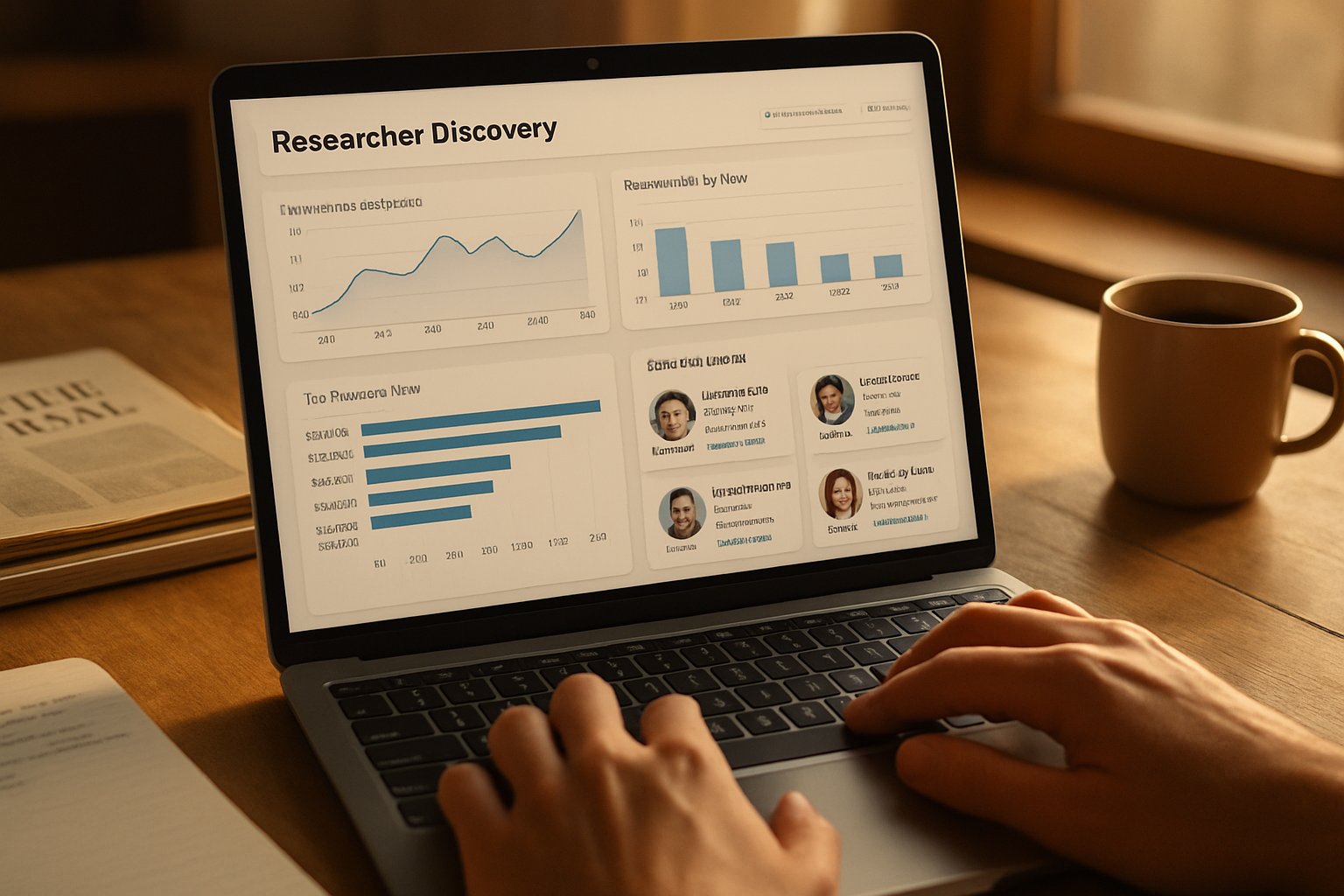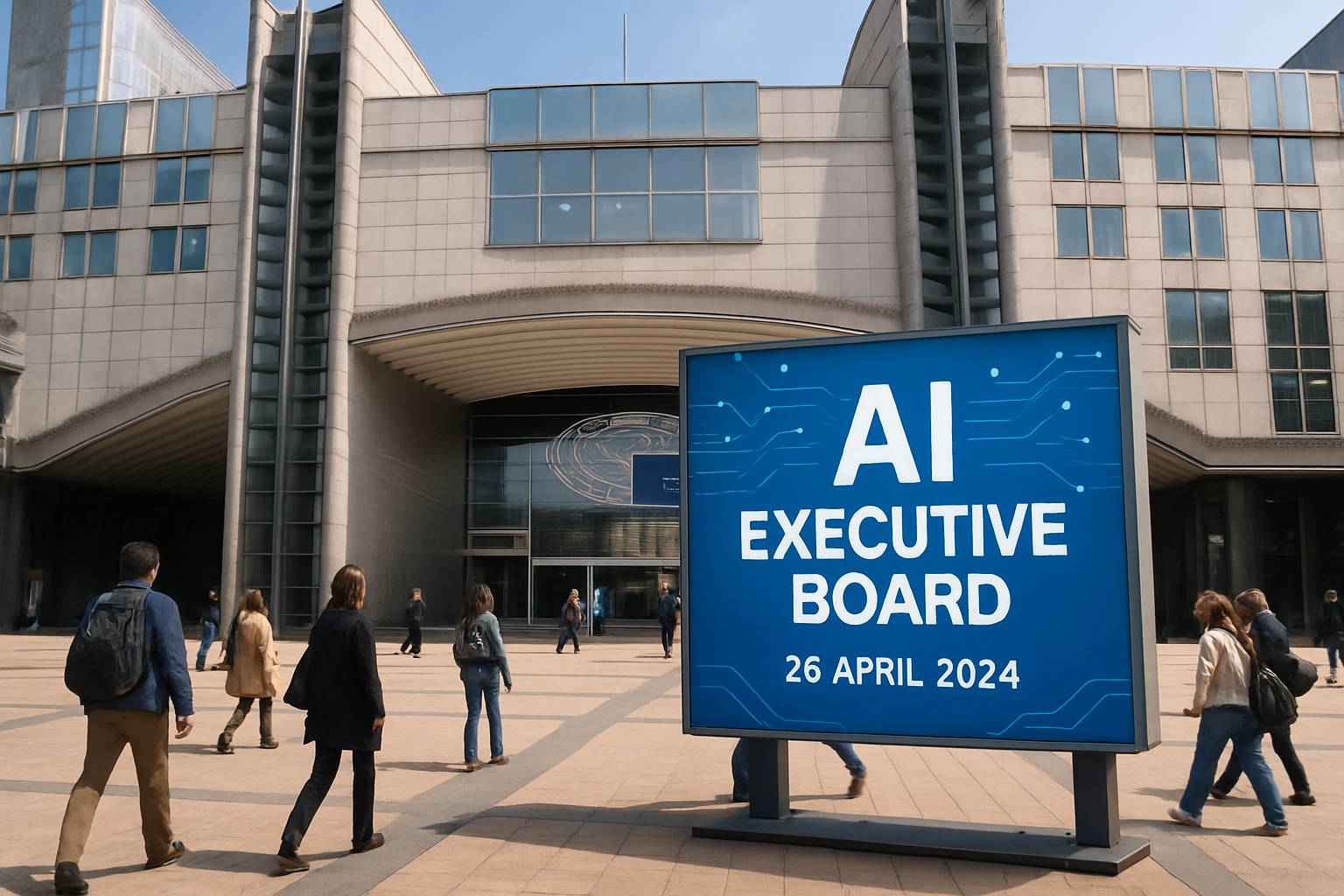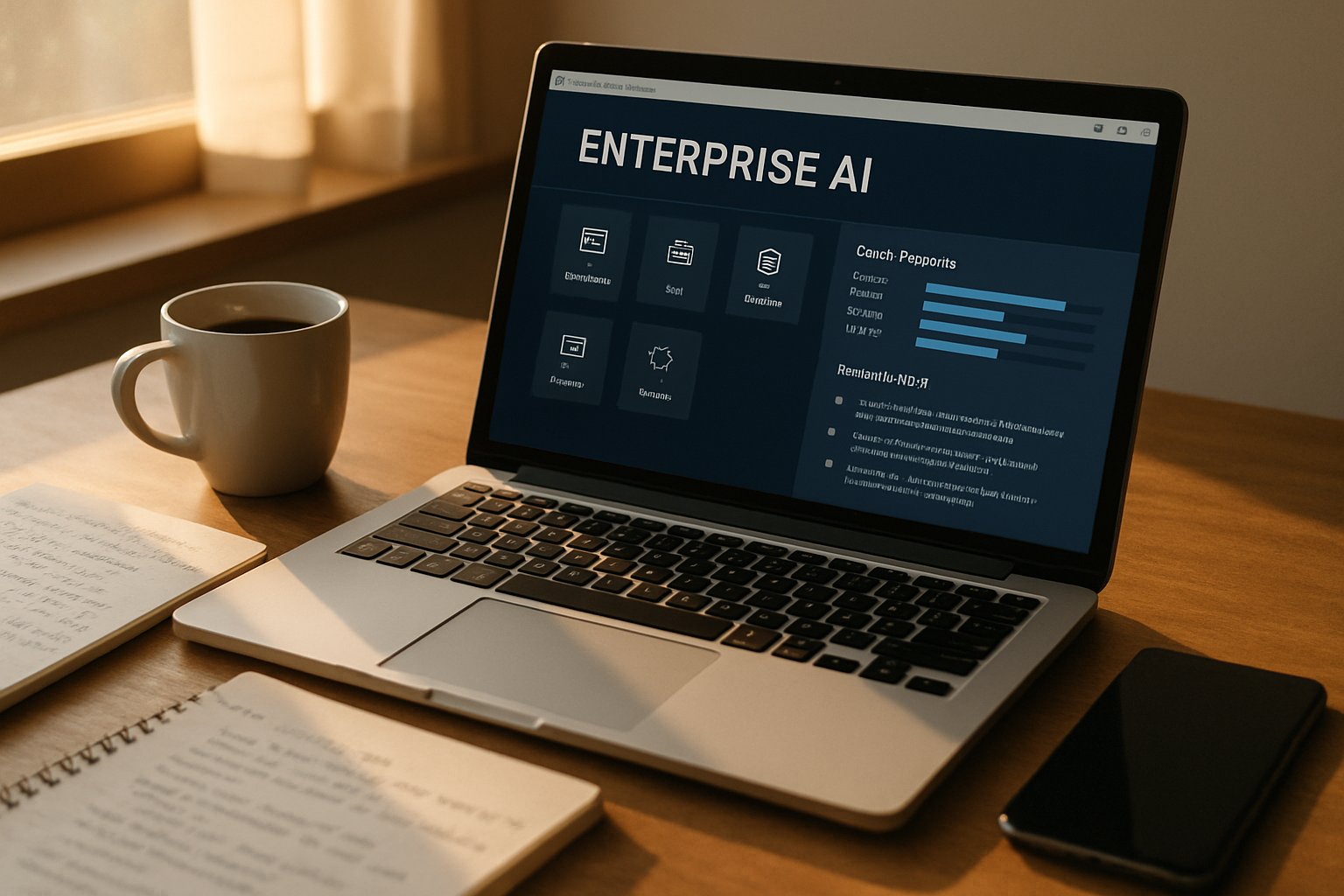
AI CERTS
1 hour ago
Pre-seed Boost for Researcher Discovery Startup Novyte Materials
Investors rarely back materials science ventures at the idea stage. Nevertheless, Theia Ventures has wagered on Novyte Materials, an Indian startup blending physics and AI. The company’s platform promises to compress laboratory timelines and expand industrial possibilities. Consequently, analysts view the move as an early signal that Researcher Discovery technology is maturing.
Novyte’s announcement arrived through coordinated press releases on 17 December 2025. Several outlets quoted an INR 4.15 crore figure, yet the Economic Times reported the amount was not officially disclosed. However, both the company and the investor confirmed that the capital will fund talent recruitment, pilot projects, and lab infrastructure. The timing aligns with surging interest in AI-driven Discovery across pre-seed deep-tech portfolios.

Key Funding Round Context
Theia Ventures led the pre-seed round, joined by angels Sandesh Paturi and Niharika Jain. Priya Shah, Theia’s founder, framed the deal as a bet on a “materials internet.” Moreover, the investment is the fund’s fourth deployment since its October 2025 first close. Reported figures differ, so precise dilution remains unclear. Nevertheless, Novyte gains runway for 18–24 months.
- Grow integrated “dry-lab” and “wet-lab” teams
- Install initial synthesis and validation equipment
- Launch three industrial pilots in manufacturing and aerospace
- Publish benchmark results to attract strategic partners
The round highlights investor appetite for platforms that convert AI hype into practical returns. These early funds set expectations for rapid milestone delivery. However, further capital will be needed to scale lab capacity.
These financing details spotlight venture confidence. Consequently, readers can now examine the underlying science powering that confidence.
Core Technology Value Proposition
Novyte combines generative models with density functional theory to predict molecular structures. Additionally, an active-learning loop refines predictions after each experiment. The company claims a ten-fold speed increase and 90 percent cost reduction during early R&D. Independent studies confirm the direction, yet real-world validation remains scarce.
The platform targets specialty chemicals, advanced polymers, and high-temperature alloys. Furthermore, closed-loop automation links simulations with robotic synthesis rigs. In contrast, traditional labs still rely on manual hypothesis testing. Researcher Discovery systems, therefore, transform material search into scalable engineering processes.
Novyte plans to open selected APIs to domain scientists. Meanwhile, executives say privacy controls will protect proprietary datasets. Professionals can enhance their expertise with the AI Researcher™ certification, which clarifies best practices for data governance in AI workflows.
This section underscores Novyte’s technical edge. Nevertheless, technology only matters if markets demand the output, which the next section explores.
Key Industry Impact Zones
Sectors under performance pressure provide Novyte with immediate use cases. Aerospace firms need lighter, heat-resistant composites to cut fuel burn. Meanwhile, manufacturing leaders seek stronger alloys for additive processes. Likewise, chemicals producers face sustainability mandates that require greener formulations.
Market analysts project AI-materials informatics will exceed USD 3 billion by 2034 with a 25 percent CAGR. Moreover, Researcher Discovery tools could unlock untapped molecular spaces, driving differentiated products. Novyte intends to deliver pilot-ready candidates within twelve months.
Industry insiders caution that regulatory testing still dominates timelines. Nevertheless, early computational screening can eliminate weak candidates before costly trials. The following list captures potential advantages:
- Trim experimental cycles from years to months
- Lower prototype costs by avoiding unnecessary synthesis
- Enable rapid property tuning for niche applications
These opportunities reinforce commercial traction. Consequently, competition is heating up globally, as detailed next.
Global Competitive Landscape Overview
Microsoft’s MatterGen and DeepMind’s GNoME datasets illustrate big-tech interest. Additionally, software veterans Schrödinger and Ansys integrate ML modules into simulation suites. Startups like CuspAI and Dunia focus on carbon-neutral materials.
In contrast, Novyte emphasizes integrated wet-lab capacity built inside India’s cost-efficient ecosystem. That positioning may lower burn rates while preserving quality. Furthermore, strong ties to ICT-NICE provide academic pipelines.
Nevertheless, larger rivals wield broader datasets and bigger compute budgets. Therefore, partnerships and differentiated intellectual property will be vital. Researcher Discovery platforms succeed only when end-users trust their predictions.
This landscape snapshot shows rising competitive stakes. However, every entrant faces shared technical and operational hurdles.
Material Risks And Challenges
Generative models can hallucinate unstable structures. Consequently, experimental validation remains the rate-limiting step. Data sparsity also hampers transfer learning across chemicals families. Moreover, industrial partners hesitate to expose proprietary process parameters.
Scaling laboratories demands capital-intensive equipment and cross-disciplinary hiring. Although the current pre-seed funds help, larger Series A rounds will follow. Regulatory compliance introduces further complexity, particularly for aerospace qualification protocols.
Independent researchers note that many published breakthroughs still lack replication. Therefore, Novyte must provide transparent benchmarks. Researcher Discovery credibility depends on rigorous peer review and open data where possible.
These constraints outline execution risk. Nevertheless, a clear roadmap could mitigate many issues, as the final section explains.
Novyte Strategic Roadmap Ahead
Founder Ajaz Khan plans to publish initial benchmark results by Q3 2026. Additionally, three pilot partners—two in manufacturing, one in aerospace—are expected to sign memoranda within months. The team aims to double headcount, focusing on quantum chemists and software engineers.
Subsequently, Novyte will pursue government grants to expand testing facilities. Moreover, the company may license certain models through cloud APIs, creating recurring revenue. A follow-on round is tentatively scheduled for late 2026, contingent on hitting pilot milestones.
Management reiterates commitment to responsible AI governance. Consequently, external audits will assess model bias and safety. Continuous improvement cycles will sustain the Researcher Discovery engine while attracting broader industry participation.
This roadmap provides measurable goals. Therefore, stakeholders can track progress against clear benchmarks.
Conclusion
Novyte Materials exemplifies the new wave of AI-enabled material science. Theia Ventures’ pre-seed capital offers a springboard toward validated breakthroughs in aerospace, manufacturing, and chemicals. However, success hinges on rigorous data, robust lab integration, and transparent validation. Moreover, the competitive landscape demands swift, credible execution. Nevertheless, the outlined roadmap suggests the team understands these pressures. Professionals eager to lead similar programs should explore the linked AI Researcher™ certification. Consequently, they can position themselves at the forefront of transformational Discovery initiatives.

AI CERTS
1 hour ago
EU’s New AI Executive Board Signals Strategic Innovation Shift
Europe has refreshed its AI Executive Board, aiming to sharpen the continent’s competitive edge. Announced on 18 December 2025, the move installs 20 experts who will steer policy, funding, and growth for breakthrough ventures. Consequently, stakeholders across research, venture capital, and industry are watching closely. This article unpacks the selection, mandate, and implications for Innovation ecosystems.
EIC Appointment Overview Update
The European Commission named 20 members, reappointing five and welcoming 15 new voices. Moreover, the group’s first plenary meeting will occur on 29 January 2026. Gender balance stands at 50:50, while 16 nationalities create broad representation. In contrast, previous cycles leaned heavily on Western hubs. The AI Executive Board now draws seven members from widening countries, strengthening regional cohesion. Overall, officials expect faster decision cycles and clearer strategic focus.

These facts underline Europe’s intent to diversify leadership. Furthermore, they set the stage for deeper collaboration across programmes.
Selection Process Key Insights
Commissioners opened applications in April 2025 and closed them six weeks later. Subsequently, 951 candidates competed, demonstrating surging interest in public-sector governance. Shortlisted experts faced interviews covering investment, Deep-tech policy, and ethics. Therefore, only top candidates progressed. Terms last two years and can be renewed twice, encouraging continuity without entrenchment. The AI Executive Board will operate in a personal capacity, limiting institutional bias.
Rigorous selection suggests the panel will bring bold yet balanced guidance. However, the true test begins once funding decisions reach startups.
Strategic Mandate And Funding
The Council manages a €10.1 billion envelope under Horizon Europe. Additionally, a proposed FP10 framework could triple this amount, pending legislative negotiations. Reuters noted a €1.4 billion boost for Deep-tech investment in 2025, underscoring rising momentum. The AI Executive Board must align priorities across Pathfinder, Transition, and Accelerator instruments. Consequently, members advocate an ARPA-like approach that tolerates risk yet demands accountability.
Key funding objectives now include:
- Accelerating Scale-ups from prototype to global market.
- Enhancing cross-border Innovation consortia.
- Leveraging equity to crowd-in private capital.
These funding levers could redefine Europe’s tech landscape. Nevertheless, budget approval remains the critical hurdle.
Diversity Metrics And Governance
Diversity extends beyond gender metrics. Moreover, sectoral balance mixes industry CEOs, venture investors, and academic leaders. Michiel Scheffer continues as president, providing continuity. Meanwhile, figures like Belén Garijo from Merck bring industrial heft. The Council emphasises conflict-of-interest safeguards. All members file declarations, and meetings observe transparency rules. The AI Executive Board intends to publish annual progress dashboards, fostering accountability.
Governance rigour should bolster public trust. However, critics will watch implementation speed and equity disbursement timelines.
Deep-Tech Growth Outlook Ahead
Europe’s Deep-tech pipeline now benefits from coordinated instruments. Pathfinder funds radical research, while Accelerator equity de-risks commercialisation. Furthermore, the renewed panel plans thematic portfolios in quantum, biotech, and clean energy. Consequently, entrepreneurs anticipate clearer roadmaps. The AI Executive Board also champions talent mobility, encouraging scientists to become founders.
This strategy promises stronger Scale-ups and wider market adoption. Yet global competition demands relentless pace.
Challenges Requiring Vigilant Oversight
Past operational delays dampened applicant confidence. In contrast, the new group must streamline contracting cycles. Moreover, clarity on FP10 mechanics, such as reflows from exits, remains pending. Independent analysts warn that bureaucratic inertia could blunt impact. The AI Executive Board thus faces pressure to publish concrete milestones within its first year.
Key risk factors include:
- Slow equity signature processes.
- Diverging national state-aid rules.
- Potential conflicts in dual-use research.
These issues highlight lingering gaps. Nevertheless, structured oversight may convert them into learning opportunities.
Conclusion And Next Steps
The refreshed AI Executive Board embodies Europe’s ambition to scale transformative ventures. Moreover, balanced geography, strengthened funding, and clear mandates position the Council for meaningful progress. Startups, investors, and policymakers should monitor the January 2026 meeting for early signals. Professionals can enhance their expertise with the AI Executive Essentials™ certification.
Continued vigilance will ensure promises translate into measurable outcomes. Therefore, engage with upcoming consultations and leverage new funding windows to drive collective success.

AI CERTS
1 hour ago
Platform Shift: AI Becomes Enterprise OS
Boardrooms label 2025 the year AI became the default runtime for corporate workflows. Meanwhile, vendors describe the transformation as a Platform Shift equal to the cloud revolution. Consequently, leaders must understand why AI now functions like an Operating System for the enterprise stack. This article unpacks the trend, market data, benefits, and hidden risks.
Additionally, it offers a practical Strategy checklist for executives planning large-scale deployments. We draw on OpenAI, Microsoft, NVIDIA, and Gartner sources to provide verified numbers. Moreover, regulatory pressures like the EU AI Act frame compliance as a first-order design Resource. In contrast, skeptics argue the OS analogy remains aspirational until agent reliability improves. Nevertheless, Macroeconomic tailwinds and multitrillion-dollar forecasts suggest the thesis will dominate budgets. By the end, you will grasp the opportunities, pitfalls, and next steps. Therefore, continue reading to benchmark your roadmap against early movers.
Vendors Redefine Core Stack
OpenAI’s DevDay illustrated how ChatGPT is shifting from feature to platform. Subsequently, the company introduced Apps SDK and AgentKit, allowing agents to run natively inside the chat surface. OpenAI executives labeled this evolution a Platform Shift that positions ChatGPT as an enterprise storefront.

Microsoft echoed that message during Ignite. Furthermore, Azure AI Foundry and Microsoft 365 Copilot now bundle identity, governance, and model routing services. Satya Nadella described the stack as an Operating System for frontier firms that demand continuous Productivity.
NVIDIA supplies the runtime layer through GPUs, NIMs, and the NVIDIA AI Enterprise suite. Consequently, CEO Jensen Huang called accelerated computing plus generative AI a new runtime for workloads. ServiceNow, Salesforce, and other SaaS leaders similarly tout agentic orchestration as their differentiating Strategy.
Collectively, these launches prove vendors are rebuilding every layer around autonomous agents. However, the Macroeconomic reality behind the hype warrants deeper analysis.
Economic Drivers And Risks
Gartner forecasts show AI spending hitting $1.48 trillion in 2025 and $2.02 trillion in 2026. Moreover, top categories include AI services, AI-optimized servers, and generative smartphones. Such numbers confirm the Platform Shift is supported by robust capital flows.
In contrast, rising GPU costs and energy demands pressure budgets. Consequently, CFOs treat capacity planning as a strategic Resource question. Any Strategy ignoring cost and carbon will face board scrutiny.
Regulators add parallel risk vectors. Therefore, the EU AI Act mandates transparency, evaluation, and documentation for high-impact systems. Non-compliance penalties up to 7 percent of global revenue make governance integral to any Operating System rollout.
Key Statistics Snapshot Data
- OpenAI: 4M developers and 800M weekly users, processing 6B tokens per minute.
- NVIDIA: AI Enterprise runtime pitched as "run time like an OS" during earnings call.
- ServiceNow agents reportedly resolve majority of internal support tickets post-Moveworks acquisition.
- Gartner: GenAI smartphones alone represent $298B of 2025 spend.
Capital, compliance, and cost shape the economic backdrop. Next, we dissect the technical anatomy enabling the Platform Shift.
Architecture Of AI Runtime
Foundation models act as the kernel inside this emerging Operating System. RAG pipelines feed factual context into models, boosting accuracy and auditability. Additionally, model routers balance cost, latency, and precision by selecting the optimal model per task.
Guardrails wrap the runtime with logging, red-teaming, and human oversight. Subsequently, policy engines enforce role-based access and data loss prevention. These layers collectively form a ubiquitous Platform Shift architecture echoed across vendor roadmaps.
Agent marketplaces sit above the runtime. Therefore, builders publish domain agents that users launch without changing underlying infrastructure. Consequently, the OS analogy resonates because runtime services abstract hardware and data complexities.
Technical convergence around models, RAG, and guardrails creates a familiar stack abstraction. However, governance forces still decide success or failure.
Governance And Compliance Pressure
Legal teams now embed audit hooks before pilots exit the lab. Meanwhile, vendors market built-in evaluation dashboards to ease regulatory reporting. Nevertheless, independent assessments reveal gaps in bias measurement and incident escalation.
EU regulators require technical documentation, risk ratings, and continuous monitoring for high-risk categories. Consequently, enterprises running an AI Operating System must map every agent to a documented purpose. Failure invites fines and reputational loss that negate Productivity gains.
U.S. guidance follows similar lines, stressing safety, security, and civil rights. Therefore, cross-jurisdiction approach is essential to avoid fragmented controls.
Compliance now shapes technical roadmaps as much as model accuracy. Next, we outline actionable steps for teams embracing the Platform Shift.
Implementation Checklist For Leaders
Start with data readiness. Furthermore, invest in vector databases, embedding pipelines, and secure connectors to ensure trustworthy retrieval. Snowflake, Databricks, Pinecone, and Weaviate offer options across price and performance.
Next, deploy model routers to manage cost variability. Additionally, integrate guardrail APIs for content filtering, prompt injection tests, and watermarking. Professionals can enhance their expertise with the Chief AI Officer™ certification.
Cost governance is the third pillar. Therefore, implement FinOps tooling that tracks GPU hours, inference tokens, and idle Resource waste. Subsequently, align chargeback models to reward efficient agent design and reinforce Strategy discipline.
Execution hinges on disciplined data, models, and cost controls. Finally, we examine contested narratives surrounding the Platform Shift.
Future Outlook And Debate
Some analysts claim the OS metaphor is marketing flourish. In contrast, proponents argue abstraction layers are inevitable in every Platform Shift era. Independent pilots show agents already resolving thousands of tickets without human intervention.
Nevertheless, reliability benchmarks remain sparse and vendor self-reported. Therefore, third-party evaluations will determine how quickly the OS narrative hardens. Macroeconomic cooling or regulatory shocks could also slow adoption despite clear Productivity upside.
Agent Reliability Concerns Persist
Guardrail frameworks continue to mature, yet hallucination rates fluctuate across domains. Consequently, enterprise buyers must demand rigorous eval results before scaling mission-critical agents. Continuous testing should be baked into the OS lifecycle alongside patch management.
Debate aside, trajectory points toward broader integration. However, cautious validation will safeguard budgets and reputations during the Platform Shift.
AI is rapidly transforming from peripheral tool to central enterprise fabric, boosting Productivity. Moreover, vendors now package agents, governance, and data access as an integrated OS layer. Macroeconomic investment forecasts and regulatory clarity both accelerate the Platform Shift momentum. Nevertheless, success depends on disciplined Strategy, robust Resource planning, and transparent evaluation methods. Therefore, leadership teams should act now, building cross-functional task forces and piloting governed agent workloads. Explore further best practices and gain credentials through the linked certification to lead your organization confidently. Consequently, embrace the Platform Shift now and turn strategic intent into measurable results.

AI CERTS
1 hour ago
Alibaba AI Cloud Market Performance Fueled by Triple-Digit Growth
Investors are watching Alibaba’s latest cloud numbers closely. However, headline claims that revenue “tripled” often mislead. The reality hides in finer disclosures around AI products. This article dissects the Market Performance behind those headlines and explains where the true acceleration sits.
Alibaba Cloud’s AI lines have posted nine consecutive quarters of Triple-Digit expansion. Meanwhile, total cloud revenue advanced a still-healthy 26-34 percent. Consequently, the Chinese giant now commands roughly one-third of the domestic AI infrastructure market. Moreover, management plans RMB 380 billion in capital spending to defend that lead. Readers will find vetted numbers, analyst insight, and risk factors below. Each section ends with a concise takeaway for busy Enterprise leaders.

Market Performance Snapshot Data
Firstly, Alibaba’s filings separate overall cloud sales from AI-related product revenue. The latter posted Triple-Digit year-over-year increases for nine quarters. In contrast, overall cloud sales grew roughly one-third.
- Q2 FY2026 cloud revenue: RMB 39.8 billion, up 34 percent YoY.
- Q1 FY2026 cloud revenue: RMB 33.4 billion, up 26 percent YoY.
- AI products now deliver over 20 percent of external customer revenue.
- China AI-cloud share: Alibaba Cloud holds about 33-36 percent, per Omdia.
- Three-year AI investment budget: RMB 380 billion.
These figures clarify the Market Performance claim. Triple-Digit AI expansion drives the headline excitement, yet broad cloud Growth remains steady. Therefore, investors should separate the two layers before making comparisons.
Alibaba’s AI surge anchors revenue acceleration. However, traditional services still provide the volume baseline. Next, we analyze revenue momentum trends.
AI Revenue Momentum Trend
Triple-Digit AI traction started in early 2023 and has not slowed. Moreover, management reiterated that streak during August and November calls. This momentum underpins Alibaba’s overall Market Performance narrative.
CEO Eddie Wu stated the industry's demand “far exceeded expectations.” Consequently, server capacity, GPUs, and power upgrades followed.
Importantly, gross billing shows compounding Growth because AI workloads consume more compute minutes than storage workloads.
Momentum appears durable while large models proliferate. Nevertheless, sustained Triple-Digit rates will inevitably normalize. The next section reviews the broader financial picture.
Cloud Segment Financials Overview
Cloud Intelligence Group remains Alibaba’s second-largest segment by revenue. In contrast, commerce still leads by absolute dollars.
Analysts praise the segment’s operating leverage, yet CapEx is climbing. Therefore, near-term margins may compress.
Market Performance expectations factor both topline Growth and profitability. Balanced views avoid assuming AI gains instantly lift earnings.
Financial indicators show solid scalability beneath heavy investment. Consequently, investors should monitor CapEx intensity before drawing long-term conclusions. Next, we assess spending plans.
Investment And CapEx Strategy
Alibaba Cloud earmarked RMB 380 billion for AI infrastructure over three years. Moreover, quarterly outlays already hit near RMB 38 billion.
Funds target data centers, Nvidia GPUs, and the Qwen model Platform. Additionally, overseas sites broaden geographic coverage and compliance.
Heavy spending limits free cash flow today. Nevertheless, management argues the strategy secures future Market Performance leadership.
CapEx outlines a bold moat-building approach. However, investors should weigh balance-sheet resilience. Competitive dynamics appear next.
Competitive Landscape And Risks
Domestic rivals Huawei, Tencent, and ByteDance invest aggressively. In contrast, AWS and Azure dominate globally.
Geopolitical rules could restrict advanced chips. Consequently, the company remains exposed to supplier shifts. Chip limits may slow hardware Platform upgrades.
Omdia analysts still rank Alibaba Cloud ahead locally. Moreover, Omdia’s Rachel Brindley labels AI the primary Growth engine.
- Margin pressure from sustained CapEx.
- Supply constraints for cutting-edge GPUs.
- International data sovereignty compliance.
- Signal noise around reported AI revenue base.
These risks could derail near-term Market Performance if not managed tightly.
Risk mapping helps stakeholders price uncertainty. Subsequently, attention shifts to Enterprise use cases.
Enterprise Demand And Usecases
Enterprise customers pursue faster model training and lower time-to-market. Consequently, they choose full-stack solutions.
Alibaba Cloud bundles infrastructure, Qwen models, and orchestration Platform elements. Therefore, customers avoid complex integration.
Higher ARPU illustrates the Growth potential. Additionally, AI inference workloads are always-on, boosting utilization. Such economics enhance overall Market Performance credentials.
Professionals can enhance their expertise with the AI Cloud Architect™ certification. Consequently, talent pipelines strengthen adoption.
Enterprise traction validates the technology stack. Moreover, sustained demand informs future outlook. We now examine the outlook for key stakeholders.
Outlook For Stakeholders
Industry forecasts show China AI-cloud spending doubling by 2025. Therefore, the addressable market expands rapidly.
Analysts expect Alibaba Cloud to keep near one-third share if execution stays disciplined. Consequently, revenue compounding remains plausible.
Crucially, consistent Triple-Digit AI revenue supports long-term Market Performance visibility.
Stakeholders should track AI share of cloud sales each quarter. Subsequently, diversified investments may balance volatility.
Outlook For Stakeholders
Alibaba’s cloud narrative blends solid core revenues with explosive AI acceleration. Moreover, disciplined monitoring of CapEx, competition, and geopolitical factors remains vital. Investors and IT leaders should center decisions on verified metrics rather than headline hype about revenue tripling. The company’s Market Performance hinges on sustaining AI momentum while protecting margins.
Nevertheless, continuous skill development helps organizations extract value. Professionals can enhance their expertise with the AI Cloud Architect™ certification. Consequently, take decisive steps now and position teams to capture the next wave of intelligent cloud opportunities.



